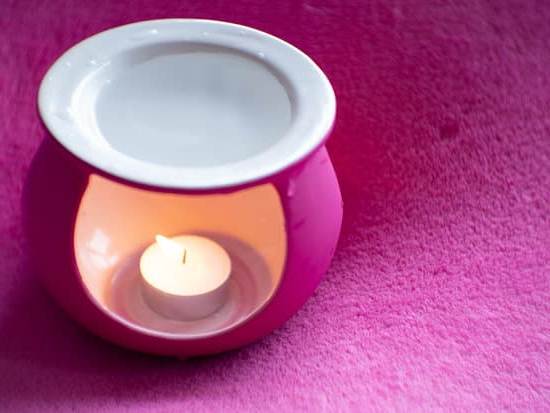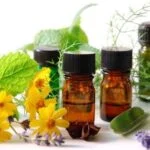Sage aromatherapy is gaining momentum in the wellness industry, enticing individuals seeking alternative therapies to enhance their overall well-being. The practice involves using sage essential oil to tap into the plant’s therapeutic properties, harnessing its natural medicinal benefits. From mental clarity and stress relief to physical healing and hormonal balance, sage aromatherapy offers a myriad of advantages for both mind and body.
As people search for holistic approaches to improve their health, they are discovering the ancient roots of sage aromatherapy. This practice dates back centuries ago, with civilizations like the Egyptians, Greeks, and Native Americans recognizing the power of this herbaceous plant. Sage was highly regarded for its various applications in rituals, ceremonies, and medicinal preparations. Today, many are embracing this age-old tradition as a key component of their self-care routines.
The science behind sage aromatherapy lies in its interaction with our olfactory system – our sense of smell. When we inhale the scent of sage essential oil, its chemical compounds enter our nasal cavity and interact with receptors that send signals to our brain. These signals then trigger physiological responses that can impact our mood, emotions, and even physical processes within our bodies. Understanding this scientific connection helps explain why sage aromatherapy has such profound effects on us.
A Brief History of Sage Aromatherapy
Sage aromatherapy has a rich history that dates back centuries, with its usage documented in various ancient civilizations. The Egyptians, Greeks, and Native Americans were among the cultures that recognized the therapeutic properties of sage and incorporated it into their wellness practices.
In ancient Egypt, sage was highly revered for its healing and purifying abilities. The Egyptians believed that burning sage released negative energy and promoted spiritual cleansing. They used it during religious rituals, as well as in mummification rituals to preserve the body. The Greeks also valued sage for its medicinal properties and considered it a sacred herb. It was used to treat various ailments, including digestive issues, inflammation, and mental fatigue.
Native American tribes in North America also had a deep appreciation for sage. Sage was commonly used in smudging ceremonies to cleanse spaces of negative energies and promote spiritual protection. It was believed to bring about clarity of mind, enhance intuition, and improve overall well-being.
Today, the cultural significance of sage continues to be celebrated through practices like burning sage bundles or using sage essential oil in aromatherapy. Its historical usage by these ancient civilizations highlights the enduring power of this aromatic herb and its ability to support both physical and emotional health.
Some key takeaways from the historical usage of sage aromatherapy include:
- Sage has been widely recognized across different cultures for its healing properties.
- Sage was commonly used in ancient Egyptian religious rituals.
- The Greeks valued sage for its medicinal qualities.
- Native Americans incorporated sage into smudging ceremonies to cleanse spaces and promote spiritual well-being.
By understanding the roots of sage aromatherapy, we can appreciate how this practice has evolved over time and incorporate it into our modern wellness routines with an even deeper sense of connection to our ancestors’ wisdom.
The Science Behind Sage Aromatherapy
Sage aromatherapy has gained significant popularity in the wellness industry, with more and more people discovering its numerous benefits. But what exactly is the science behind sage aromatherapy? How does sage essential oil interact with our body’s olfactory system and trigger various physiological responses? Let’s dive into the scientific explanation.
When we breathe in the aroma of sage essential oil, its molecules are detected by olfactory receptors located in our nasal cavity. These receptors send signals to a part of the brain called the limbic system, which plays a crucial role in regulating emotions, memory, and behavior. The limbic system then initiates a cascade of reactions throughout the body that contribute to the therapeutic effects of sage aromatherapy.
One important component of sage essential oil is a compound called camphor. Camphor has been found to possess antimicrobial properties and may help to reduce inflammation, making it beneficial for respiratory conditions such as coughs, colds, and sinus congestion. In addition, research suggests that camphor can stimulate blood circulation and relieve muscle pain and tension.
Furthermore, another compound found in sage essential oil called thujone has been shown to have antibacterial and antifungal properties. Thujone may also have an inhibitory effect on gamma-aminobutyric acid (GABA) receptors in the brain, leading to enhanced cognitive function and improved mental clarity.
Overall, the science behind sage aromatherapy is complex yet fascinating. The interaction between sage essential oil and our olfactory system triggers various physiological responses that contribute to its therapeutic benefits. From reducing inflammation to improving mental clarity, incorporating sage aromatherapy into your daily routine can be a natural way to enhance both your physical and mental well-being.
| Physiological Response | Effect |
|---|---|
| Reduces inflammation | Sage essential oil contains compounds like camphor that possess anti-inflammatory properties, potentially reducing swelling and pain. |
| Enhances cognitive function | The compound thujone found in sage essential oil may have an inhibitory effect on GABA receptors in the brain, leading to improved mental clarity and concentration. |
| Relieves muscle tension | Sage essential oil’s camphor content can stimulate blood circulation and alleviate muscle pain and tension. |
Benefits of Sage Aromatherapy for the Mind
Sage aromatherapy has been recognized for its positive effects on the mind and mental well-being. The use of sage essential oil can have a profound impact on mental clarity and focus.
When inhaled, the aroma of sage stimulates the brain’s olfactory system, which is connected to the limbic system – the part of the brain responsible for emotions, memory, and behavior. This interaction triggers a release of neurotransmitters such as dopamine and serotonin, known as “feel-good” chemicals that promote mental alertness and elevate mood.
In addition to improving focus and mental clarity, sage aromatherapy has also shown promising results in alleviating symptoms of stress, anxiety, and depression. Research suggests that sage essential oil has anxiolytic properties that can help reduce feelings of tension and anxiety. It may also promote relaxation by calming the nervous system and inducing a state of tranquility. Furthermore, sage aromatherapy has been found to have anti-depressant effects by regulating certain neurotransmitters associated with mood regulation.
To incorporate sage aromatherapy into your daily routine to reap these benefits for your mind, there are several methods you can try. One popular method is using a diffuser or vaporizer to disperse the scent of sage essential oil throughout a room or space. This allows you to inhale the aroma consistently over time.
Alternatively, you can add a few drops of sage essential oil to a hot bath or shower for an invigorating sensory experience that relaxes both your body and mind. Lastly, topical application is another effective way to benefit from sage aromatherapy. Dilute a few drops of sage essential oil with a carrier oil such as coconut oil or almond oil before applying directly onto your skin.
With its ability to enhance mental clarity, improve concentration, and alleviate symptoms of stress, anxiety, and depression, sage aromatherapy is a valuable tool for supporting your overall mental well-being. Incorporating sage essential oil into your daily routine may help you achieve a greater sense of balance and tranquility in your life.
Benefits of Sage Aromatherapy for the Body
Sage aromatherapy not only offers mental benefits but also provides numerous physical benefits to the body. One of the key advantages of sage aromatherapy is its potential to relieve muscle tension and promote relaxation. The soothing properties of sage essential oil can help relax tight muscles, reduce stiffness, and alleviate discomfort caused by physical exertion or stress.
In addition to relieving muscle tension, sage aromatherapy has been found to have anti-inflammatory properties. Inflammation is a natural response in the body to injuries or infections, but chronic inflammation can lead to various health problems. Sage essential oil contains compounds that have been shown to inhibit pro-inflammatory enzymes, helping to reduce inflammation in the body and potentially relieve symptoms of inflammatory conditions such as arthritis or inflammatory bowel disease.
Improving digestion is another benefit of sage aromatherapy. Sage essential oil has been traditionally used for its digestive properties, as it helps stimulate the production of digestive enzymes and bile, which play crucial roles in breaking down food and absorbing nutrients. By promoting healthy digestion, sage aromatherapy can help alleviate common digestive issues such as indigestion, bloating, and constipation.
Furthermore, research suggests that sage aromatherapy may have immune-boosting effects. Sage essential oil possesses antimicrobial activity against various pathogens and has been shown to enhance immune system function. By incorporating sage aromatherapy into your daily routine, you may support your body’s natural defense mechanisms and potentially reduce the risk of infections.
With its ability to relieve muscle tension, reduce inflammation, improve digestion, and boost the immune system, it is clear that sage aromatherapy offers a range of physical benefits for overall well-being. Incorporating this practice into your holistic wellness routine can contribute positively to your physical health and enhance your quality of life.
Sage Aromatherapy for Hormonal Balance
Hormonal imbalances can have a significant impact on our overall well-being and quality of life. Many individuals, particularly women, experience issues such as menstrual irregularities, mood swings, hot flashes, and other symptoms related to hormonal fluctuations. Fortunately, sage aromatherapy can offer a natural and effective solution for promoting hormonal balance and improving reproductive health.
Regulating Hormonal Imbalances:
Sage essential oil is known for its ability to mimic estrogen in the body. This makes it particularly useful for individuals experiencing low estrogen levels or hormonal imbalances. When used topically or inhaled through aromatherapy practices, sage essential oil works by activating specific receptors in the brain and body responsible for regulating hormone production. By stimulating these receptors, sage aromatherapy can help restore balance to hormone levels and alleviate symptoms associated with hormonal imbalances.
Alleviating Menopausal Symptoms:
Menopause is a natural biological process that marks the end of a woman’s reproductive years. However, the accompanying symptoms like hot flashes, night sweats, mood swings, and vaginal dryness can be challenging to navigate. Sage aromatherapy has been found to be beneficial in managing many of these symptoms.
The estrogen-like properties of sage essential oil make it helpful in reducing hot flashes and night sweats. Additionally, inhaling sage oil through diffusers or using it topically may help relieve anxiety and improve overall mood during this transitional phase.
Improving Reproductive Health:
Sage essential oil has been traditionally used to support women’s reproductive health throughout different stages of life. Its antispasmodic properties make it effective in reducing menstrual cramps and pain associated with menstruation. Furthermore, regular use of sage aromatherapy may improve circulation to the pelvic region, supporting healthy reproductive function. Women trying to conceive may find sage essential oil beneficial as it helps balance hormones and promotes regular menstrual cycles.
It is important to note that sage aromatherapy should be used with caution during pregnancy, as it can affect hormone levels. It’s always best to consult a healthcare professional before using sage essential oil or any other form of aromatherapy for hormonal balance or reproductive health concerns.
Incorporating sage aromatherapy into one’s daily routine can greatly contribute to overall wellness by promoting hormonal balance and improving reproductive health. Whether through diffusers, inhalation, or topical application, there are various ways to enjoy the benefits of sage essential oil.
Experimenting with different methods and finding what works best for individual needs is key to achieving desired results. With its long history of use and the growing body of scientific evidence, sage aromatherapy is proving to be a valuable tool in managing hormonal imbalances and supporting reproductive health.
Incorporating Sage Aromatherapy into Daily Routine
Sage aromatherapy has gained popularity in the wellness industry for its potential health benefits and therapeutic effects. If you’re interested in incorporating sage aromatherapy into your daily routine, there are several practical tips and suggestions to consider. Whether you prefer using diffusers, inhalation, or topical application, there are various methods to enjoy the benefits of sage essential oil.
One common method of enjoying sage aromatherapy is through the use of diffusers. Diffusers disperse the scent of sage essential oil into the air, allowing you to inhale its therapeutic properties. There are different types of diffusers available in the market – ultrasonic diffusers that use water to disperse a fine mist of essential oils, nebulizing diffusers that create a concentrated stream of pure essential oil particles without water, and candle or heat-based diffusers that release the fragrance through warmth.
Another way to incorporate sage aromatherapy into your daily routine is through direct inhalation. You can apply a few drops of diluted sage essential oil onto a tissue or handkerchief and take deep breaths to enjoy its aroma. This method is suitable for quick relief from stress or anxiety on-the-go.
Topical application is also an effective way to benefit from sage aromatherapy. When using sage essential oil topically, it is important to dilute it with a carrier oil such as jojoba oil or coconut oil before applying it to the skin. This will help prevent any skin irritation or sensitization. Once diluted, you can massage the blend onto specific areas of your body where you may experience muscle tension or inflammation.
Sage Aromatherapy Methods
| Method | Description |
|---|---|
| Diffusers | Disperse the scent of sage essential oil into the air, allowing inhalation of its therapeutic properties. |
| Inhalation | Apply a few drops of diluted sage essential oil onto a tissue or handkerchief and take deep breaths to enjoy its aroma. |
| Topical Application | Dilute sage essential oil with a carrier oil before applying it to the skin for localized relief from muscle tension or inflammation. |
These are just a few suggestions on how to incorporate sage aromatherapy into your daily routine. However, it is important to note that everyone may respond to aromatherapy differently, and individual preferences and sensitivities should be taken into consideration. It is always recommended to consult with a qualified aromatherapist or healthcare professional before starting any new aromatherapy practice.
Precautions and Safety Guidelines
Potential Risks and Precautions
While sage essential oil can offer numerous benefits, it is important to exercise caution when using it. There are a few potential risks and precautions to keep in mind:
Allergic Reactions
Some individuals may have allergies or sensitivities to sage essential oil. Before using it, it is recommended to perform a patch test on a small area of the skin to check for any adverse reactions. If you experience redness, itching, or irritation, discontinue use immediately.
Pregnancy and Nursing
Pregnant women and nursing mothers should exercise caution when using sage essential oil. It is advisable to consult with a healthcare professional before incorporating sage aromatherapy into their routine. Sage has been shown to have stimulating effects on the uterus and may increase the risk of miscarriage or premature labor.
Children and Pets
Sage essential oil should not be used on infants, young children, or pets without the guidance of a qualified healthcare professional or veterinarian. Certain compounds in the oil may be too potent for their delicate systems and could potentially cause harm.
Dosage Recommendations
When using sage essential oil, it is crucial to follow proper dosage guidelines to ensure safe usage:
- For topical application: Dilute 2-3 drops of sage essential oil with 1 teaspoon of carrier oil (such as coconut oil) before applying directly onto the skin.
- For inhalation: Add 3-5 drops of sage essential oil to a diffuser or inhale directly from the bottle. Limit inhalation time to around 30 minutes per session.
- For oral consumption: Seek guidance from a qualified aromatherapist or healthcare professional before ingesting sage essential oil. It’s important to note that ingestion is typically not recommended unless under professional supervision due to its potency.
Contraindications and Side Effects
While sage aromatherapy can be beneficial for many individuals, there are certain cases where it may not be suitable:
- Epilepsy or seizures: Sage essential oil has been known to potentially trigger seizures in individuals with epilepsy. It is recommended to avoid sage aromatherapy if you have a history of seizures or epilepsy.
- High blood pressure: Sage essential oil has hypertensive properties that can increase blood pressure. Individuals with hypertension should use caution when using the oil and consult with a healthcare professional before incorporating it into their routine.
- Skin sensitivity: Some people may experience skin irritation or sensitization when using sage essential oil topically. If you have sensitive skin, it is advisable to perform a patch test before applying the oil.
It is always best to seek advice from a qualified aromatherapist or healthcare professional before incorporating any new wellness practices into your routine, especially if you have pre-existing medical conditions or are taking medications that could potentially interact with sage essential oil. Following these precautions and safety guidelines will help ensure a safe and enjoyable experience with sage aromatherapy.
Conclusion
In conclusion, sage aromatherapy has a rich history and is gaining popularity in the wellness industry for good reason. As explored in this article, sage aromatherapy has been used for centuries in ancient civilizations such as the Egyptians, Greeks, and Native Americans. The science behind sage aromatherapy lies in its interaction with the body’s olfactory system, triggering various physiological responses that benefit both the mind and body.
When it comes to the mind, sage aromatherapy can bring about mental clarity, enhance concentration, and alleviate symptoms of stress, anxiety, and depression. For the body, it offers a multitude of benefits such as relieving muscle tension, reducing inflammation, improving digestion, and boosting the immune system. Additionally, sage essential oil can be used to regulate hormonal imbalances and alleviate menopausal symptoms while improving overall reproductive health.
Incorporating sage aromatherapy into your daily routine is both practical and simple. Whether through diffusers, inhalation techniques or topical application, adding a touch of sage to your day can provide numerous health benefits. However, it is important to take precautions and adhere to safety guidelines when using sage essential oil. Proper dosage recommendations should be followed, contraindications must be considered, and possible side effects should be taken into account.
Frequently Asked Questions
What is sage aromatherapy good for?
Sage aromatherapy is known to have several benefits for both the mind and body. One of its primary uses is for relaxation and stress relief. The soothing aroma of sage can help calm the mind, reduce anxiety, and promote a sense of serenity.
Additionally, sage is believed to have anti-inflammatory properties, making it helpful for relieving muscle pain and joint inflammation. Some also use sage aromatherapy as a natural remedy for respiratory issues due to its potential decongestant properties.
What does sage do to the human body?
Sage has various effects on the human body that make it a valuable herb in traditional medicine practices. It contains compounds such as terpene ketones, which are believed to possess antimicrobial properties that can combat bacteria and protect against infections.
Sage also has antioxidant properties, which means it helps neutralize harmful free radicals in the body and reduces oxidative stress. Moreover, it may support digestion by stimulating bile flow and improving overall gut health.
What is the spiritual benefit of sage oil?
In spiritual practices, sage oil holds symbolic significance and is often associated with purification and cleansing rituals. The aroma of sage oil is said to clear negative energy from spaces or individuals, helping create a positive environment conducive to spiritual growth and meditation.
Many believe that sage oil has the ability to cleanse not only physical spaces but also one’s aura or energy field when used ritually or during meditation sessions. Its scent is thought to enhance spiritual awareness and promote a deeper connection between the mind and spirit during mindful practices.

Are you looking for a natural way to improve your health and wellbeing?
If so, aromatherapy may be the answer for you.





